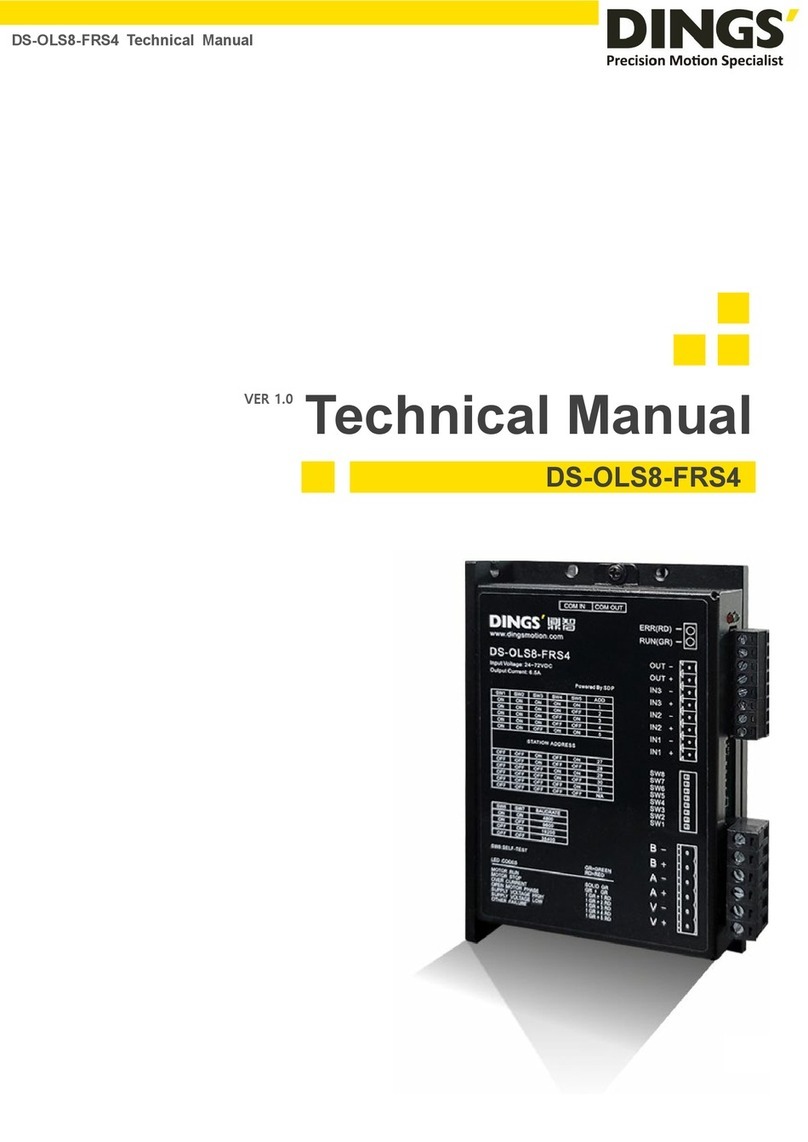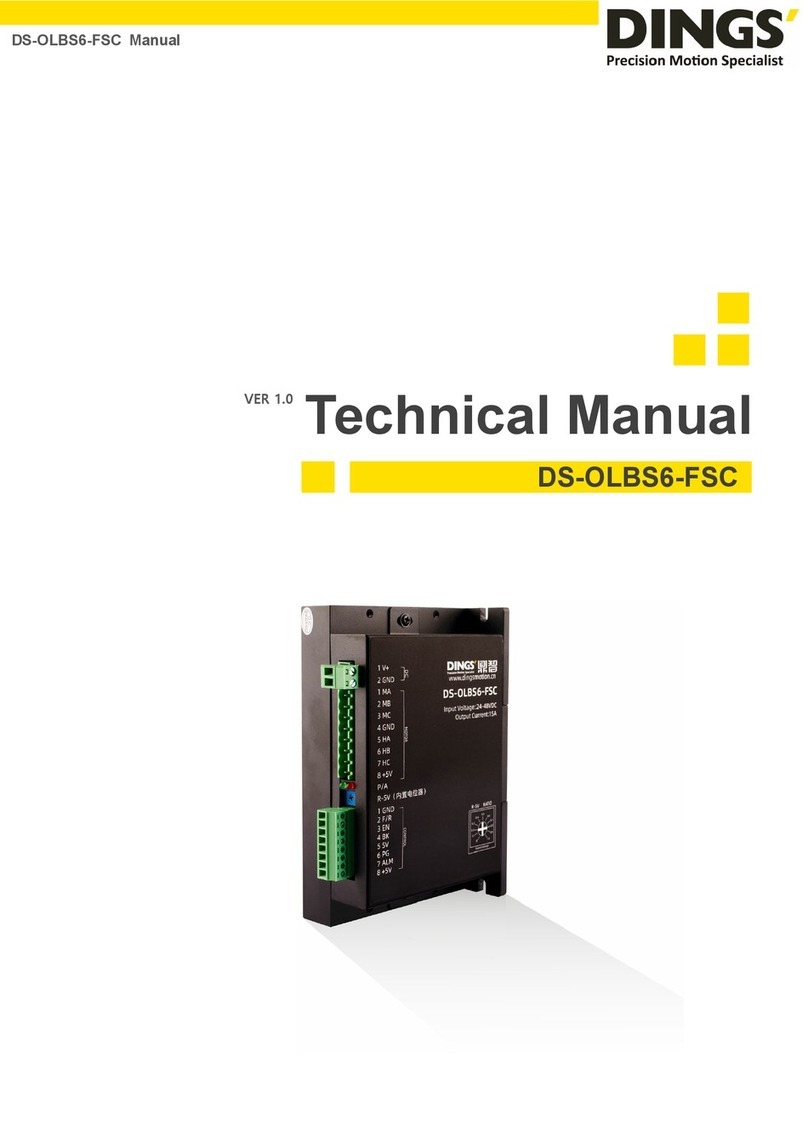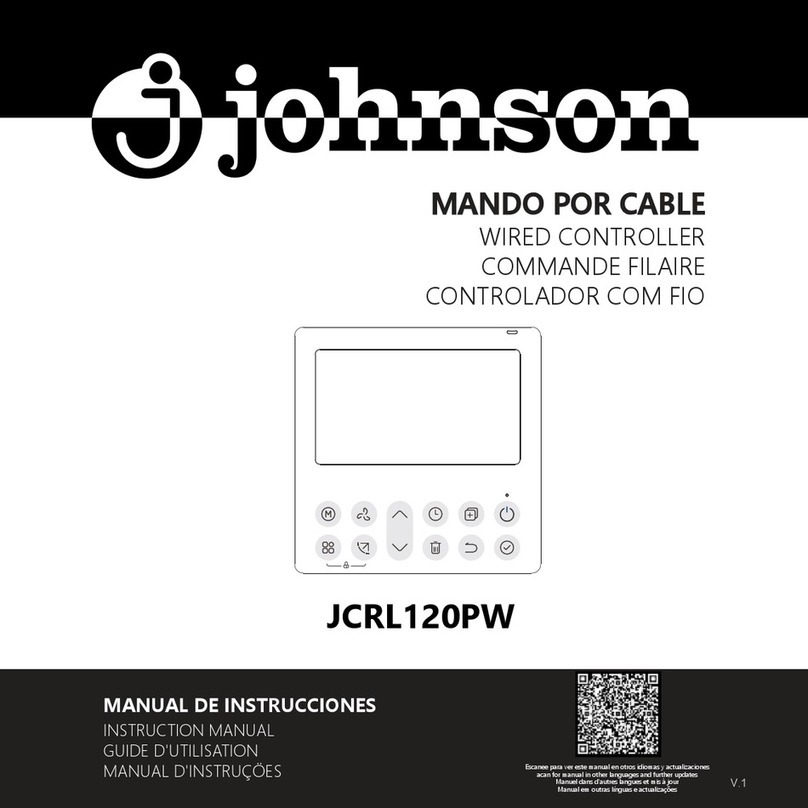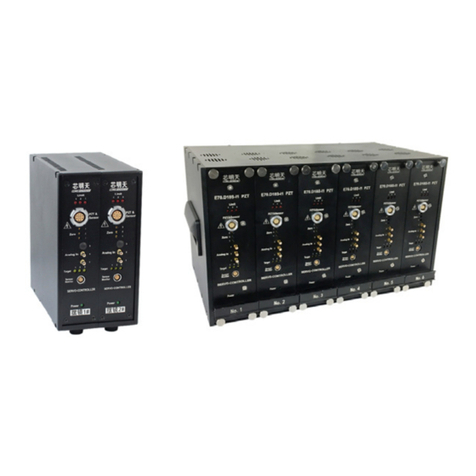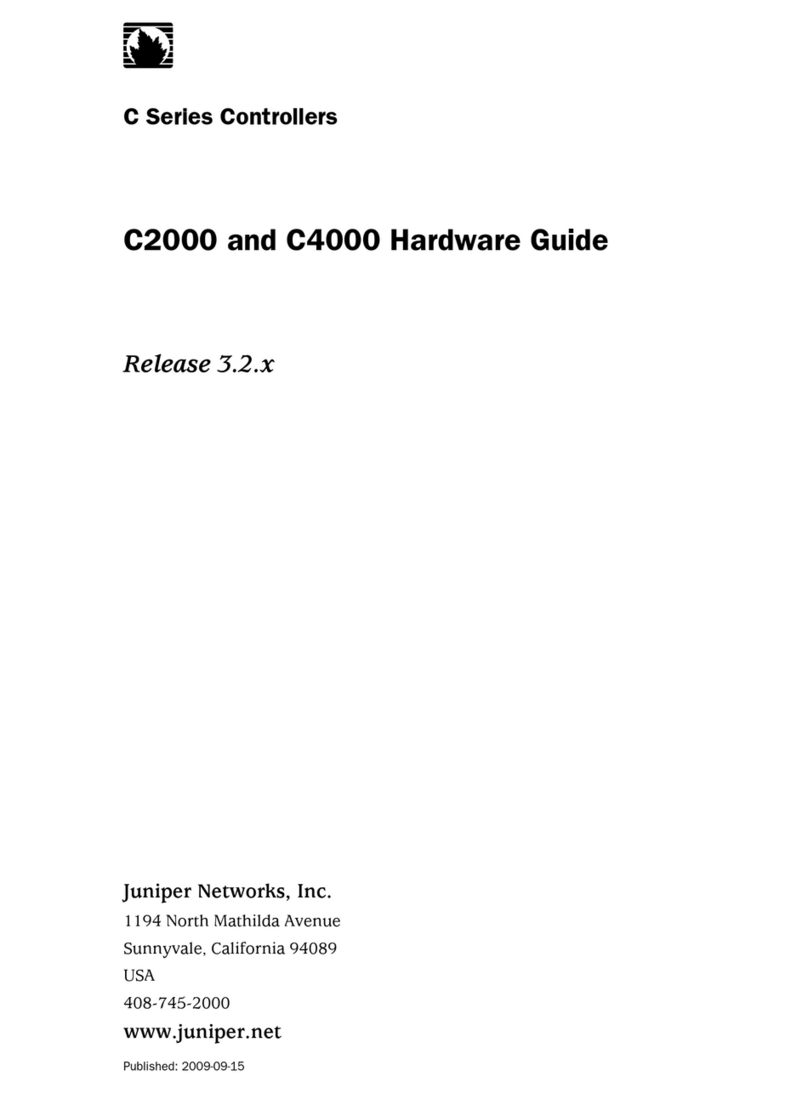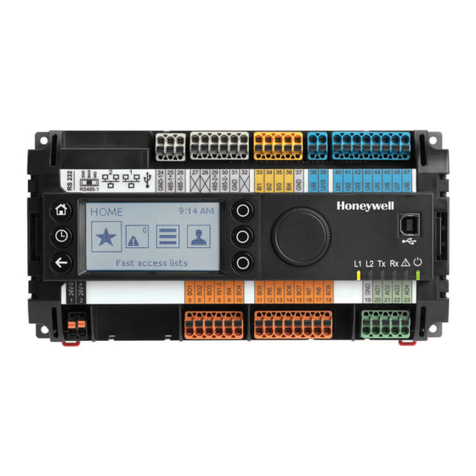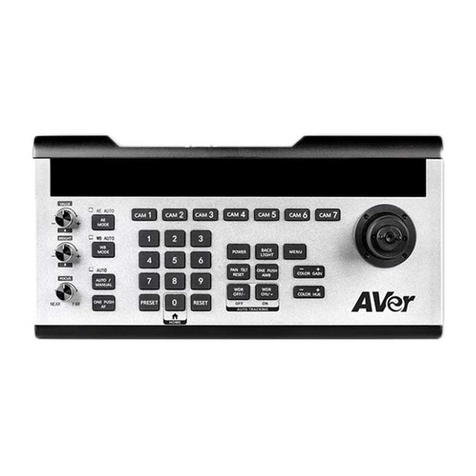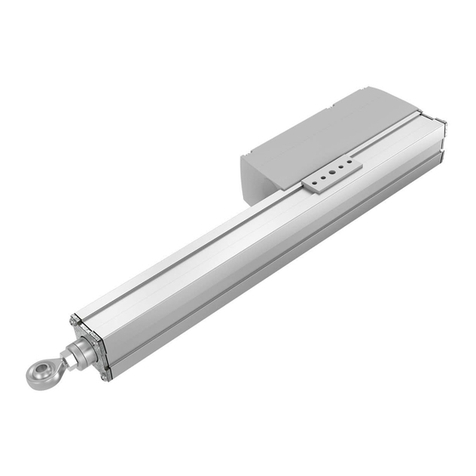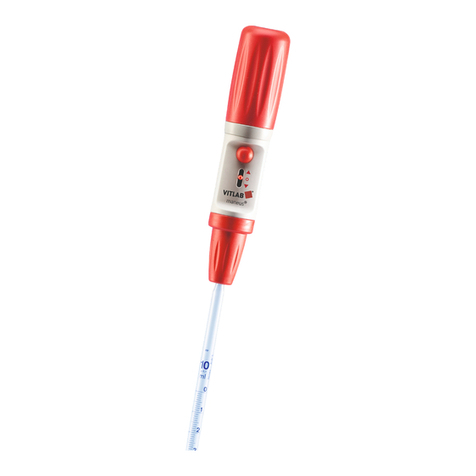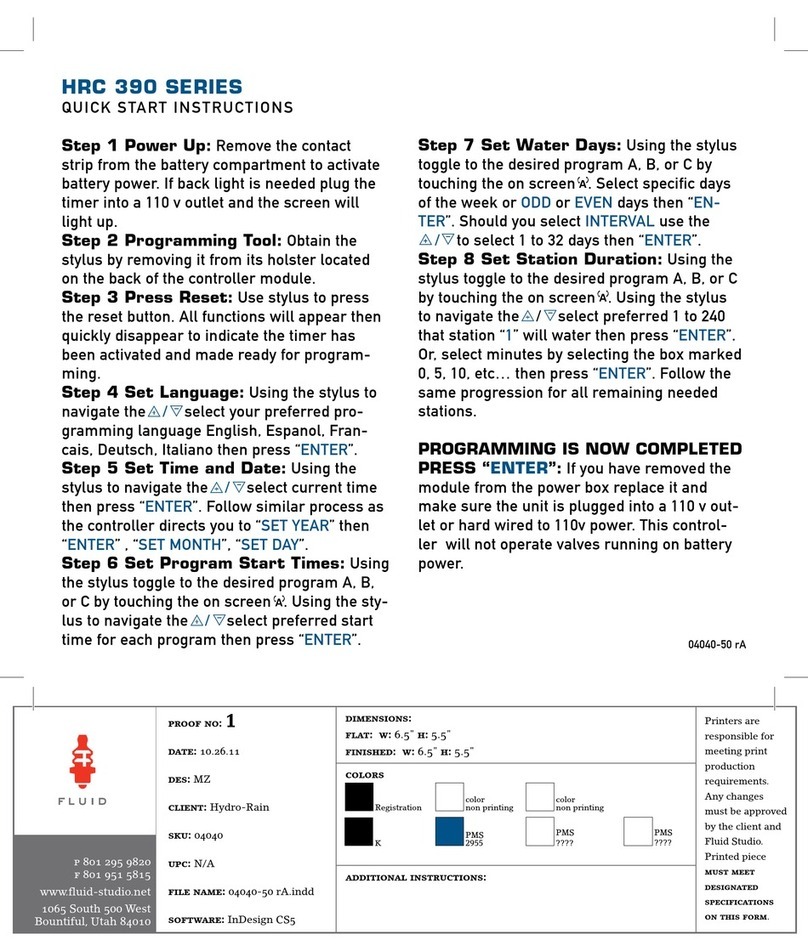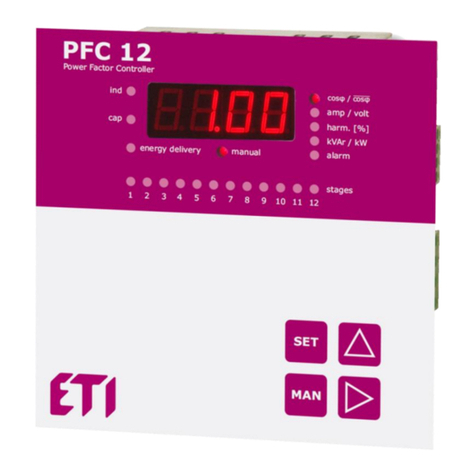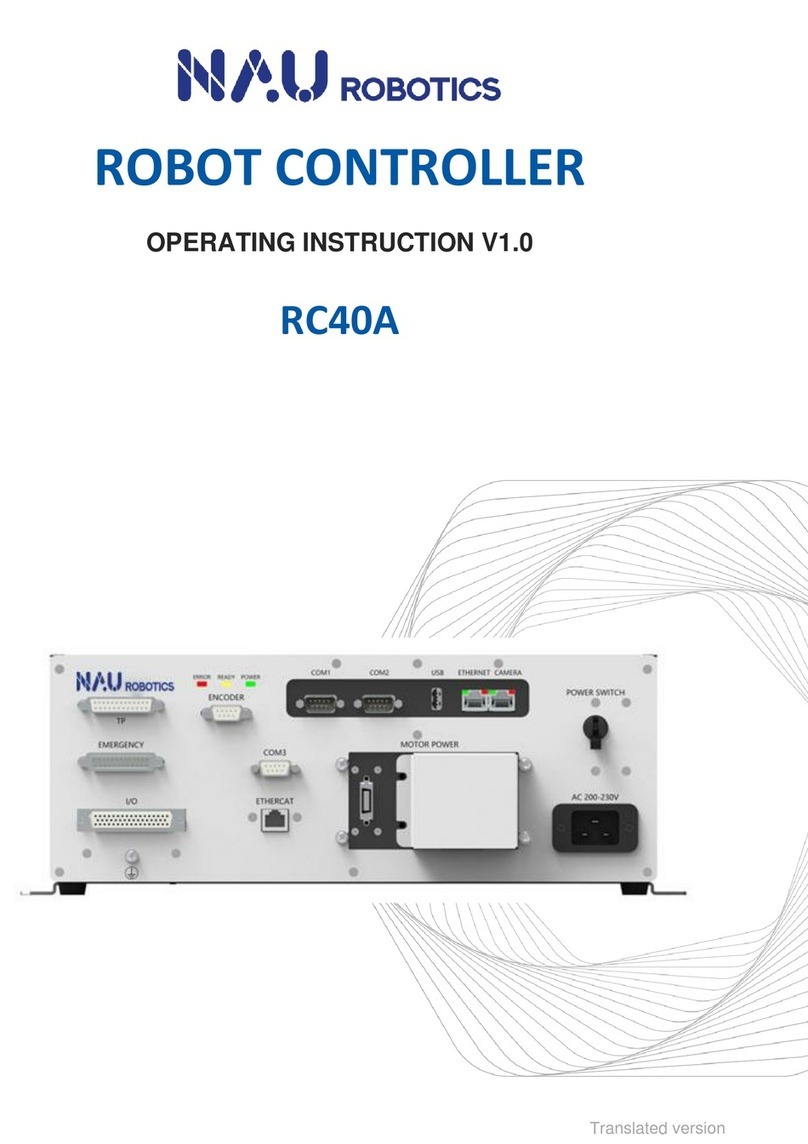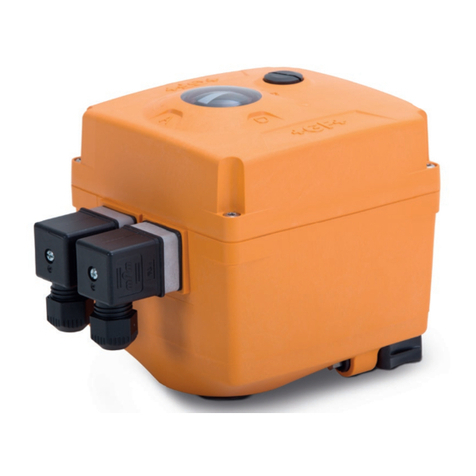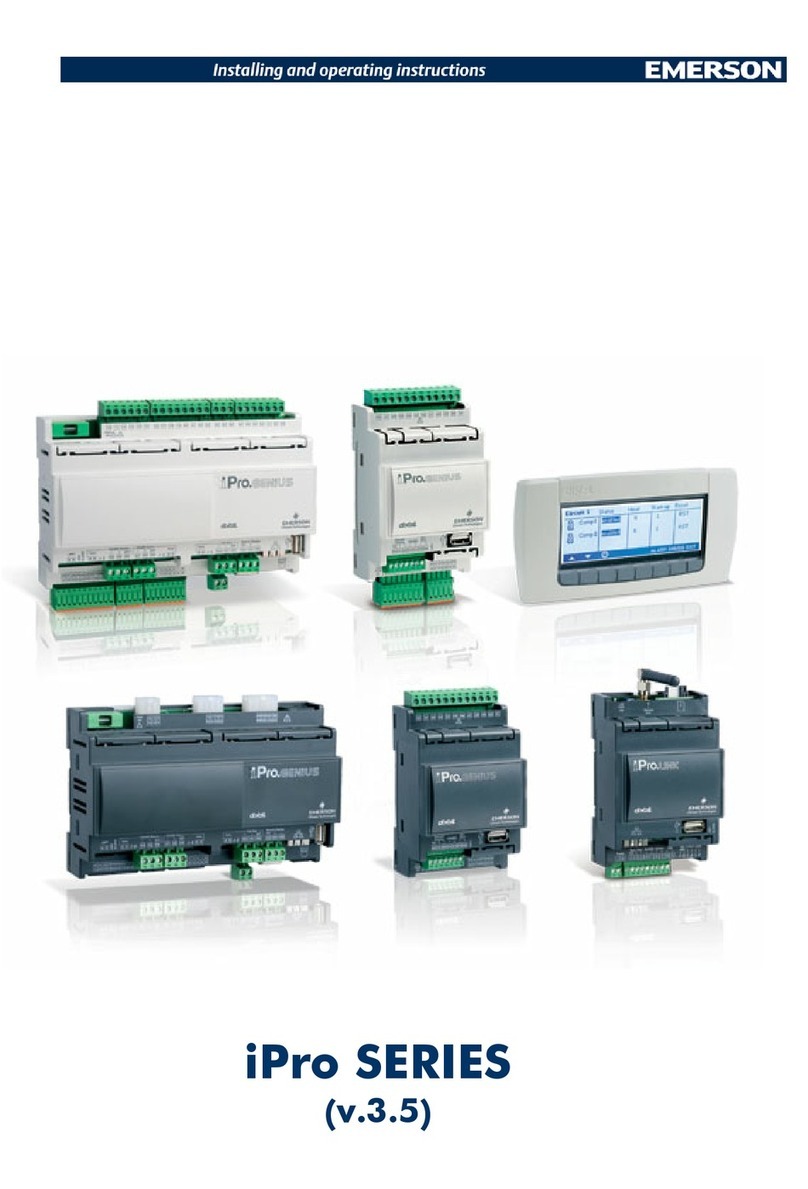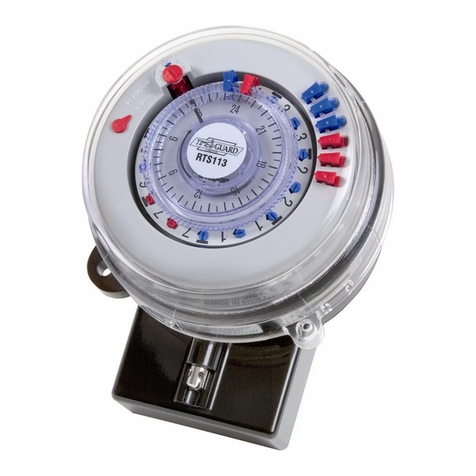Dings DS-CLS10-FRS4 User manual

page│1
Technical Manual
DS-CLS10-FRS4
DS-CLS10-FRS4
VER 1.0

page│2
Table of Contents
1.
Main Specifications…………………………………………………………………...…………………………3
2. Get Ready………………………………………………
…………………... ……….
……………………………….4
2.1 Wiring……..…….…………………………..…………
…………………................
…………………………4
3. The Connector Specifies the Table.……………………………
…………………................
…………………….4
3.1CN1 (power supply)………………………….…………………
…………………...............
………………...4
3.2 CN2 (motor wiring)…………..……………………………….………
…………………... ……….
………....4
3.3 CN3 (holding brake output)…..……………………..
…………….....................
……….……………….....5
3.4 CN4 (encoder input)...……………………….……………
…………….....................
…………………….5
3.5 CN5 (I/O)……………………..……………………………….…
……………..........................
………….....7
3.6 CN6 (IN) / CN7 (OUT)(RS485)..…………….………………………
……………......................
………….7
3.7 SW1 (Set the switch)….……..……………………………….…………
……………......................
……....8
4. Input Loop Diagram..…….…………………………………………………………
……………......................
.....9
5. Output Loop Diagram…...…………………………………………………………
……………......................
..11
6. LED Indicator…………….……………………………………
…………….......................
……………………....12
7. Form Factor (mm)…..…...…………………………………………
…………….......................
………………...14
8. Control Parameters……...………………………………………………
……………......................
…………....14
8.1 Controller Basic Status (Class 01)………….………………………
…………….......................
………....14
8.2 Basic Parameter Settings (Class 02)……………………….…………
…………….......................
……...15
8.3 Closed-Loop Parameter Setting (Class 04)…………………..……….
……………......................
….....15
8.4 Control Parameters (Class 06)……………...……………………………
…………….......................
..….16
8.5 Input Block Designation (Class 06)………………………….………………
……………......................
..17
8.6 Output Block Designation (Class 07)……....……………………………….
……………......................
..18
8.7Multi-Segment Position Mode (Class 08)…..……………………………….
……………......................
.19
9. Message Format..…..…...………………………………………………………….
……………......................
..23
10. MODBUS Transactions..…………………………………………………………
……………........................
...25
10.1 Definition of MODBUS Transactions..…….………………………………
…………….......................
..25
10.2 MODBUS Responds Normally……….…………………….………………
……………......................
...26
10.3 MODBUS Exception Response…………...…..……………..……….…
…………….......................
.…..26
11. Data Encoding………………………………………………………………………
……………......................
.....26
12. Definition of Public Function Code and Description of Function Code………...
……………......................
...27
12.1 03 (0x03) Read hold registers……………...………………………………
……………......................
..27
12.2 06 (0x06) Write a single register….….…………………….………………
…………….......................
..29
12.3 16 (0x10) Write multiple registers………....…..……………..……….…
…………….......................
.….31
13. MODBUS Master Node Working Mode…..………………………………………
……………......................
.....34
14. MODBUS Address Rules….……………………………………………………….
……………......................
..34
15. Master/Slave Communication Timing Diagram…………………………………..
…………….....................
...35
16. RTU Transmission Mode..………………………………………………………….
…………….....................
...36
17. CRC Check……………....…………………………………………………………..
……………......................
.37
18. Line-MODBUS Definition.…………………………………………………………
…………….......................
...41
Click to return to table of contents
Contents

page│3
1. Main Specifications
Main Specifications
Project Content Note
Model DS-CLS10-FRS4
Input supply voltage DC 24V~72V
Maximum output current 6.0A (0-peak)
Control object motors 2-phase bipolar stepper motor with encoder
Drive mode PWM constant current drive
Communication interface
Input
・Pulse, direction input (configurable as
digital input)
・Number input 7
・Encoder inputs (A, B, Z)
Output
・3 digital outputs
・Encode the signal output
(Differential A, B, Z)
With the exception of the fixed encoder
output, all other inputs/outputs can be
freely configured via communication
Enter the details digitally
/SV ON (Servo On)
/RESET (Alarm reset)
/START (Motor start / stop)
/JOG (The motor jogs)
/HOME (Back to zero)
Digital output details /IN POTISION
/ALARM
LED indication Status, fault
Communication I/F RS485, up to 30 nodes
MODBUS RTU protocol, baud rate:
19200bps (preset) or according to
convention
Control method
Location control mode Positioning according to pulse and
RS485 communication
Speed control mode Digital instructions
Form factor ( mm)156 (L) × 97 (W) × 33.5 (H) Terminal blocks are not included
weight About 376g Terminal blocks are not included
Operating
temperature / humidity 0~45°C, 85%RH or less Prevents condensation
Save the temperature -10~70°C, 85% or less Prevents condensation
Ambient gases Protection against corrosive gases

page│4
2. Get Ready
* Be sure to do the following before turning on the power.
2.1 Wiring
1. Be sure to make sure that you refer to the Description Connector Designation Table for wiring.
2. CN1 :power supply
Please use AWG#20 or above.
3. CN2 :Motor wiring
4. CN3 :Holding brake output
5. CN4 :Encoder wiring
6. CN5 :Wiring of interface signals
Configure the necessary digital input and digital output signals. The general-purpose inputs /
outputs are isolated by optocouplers. Please prepare the power supply (+24V) for the interface.
Notes The encoder signal is
differential output and is not isolated with an
optocoupler
7. CN6 :Wiring for RS485 communication Please use RJ45 connectors.
8. CN7 :Wiring for RS485 communication Please use an RJ45 connector.
9. SW1 :Eight-step DIP switch, node setting
3. The Connector Specifies the Table
3.1 CN1 (power supply)
Terminal number Icon Pin. Signal name
CN1
2 power supply V+ (DC24V~72V)
1 power supply GND
Pay attention to the polarity of the power supply when wiring
Wire specifications: AWG20~AWG16 (multi-stranded wire)
3.2 CN2 (motor wiring)
Terminal number Icon Pin. Signal name
CN2
4 Electric machine A+
3 Electric machine B+
2 Electric machine A-
1 Electric machine B-
Get Ready / The Connector Specifies the Table

page│5
3.3 CN3 (holding brake output)
Terminal number Icon Pin. Signal name
CN3
2 BRK+ brake output is positive
1 BRK - Negative brake output
3.4 CN4 (encoder input)
Pin. Signal name Pin. Signal name
1 A+ 2 A-
3 B+ 4 B-
5 Z+ 6 Z-
7 +5V 8 0V
9 FG 10 NC
Diagram
Pay attention to the polarity of the encoder power supply when wiring
Wire specifications: AWG28~AWG18 (multi-stranded wire)
The terminals are spring-retracted and front-wired, making it easy to operate
with a dedicated screwdriver.
Use special tools to tighten the terminal blocks
When tightening the terminals, use a screwdriver with
a blade width of 0.4×2.5.
Phoenix Contacts screwdriver
(Product number: 1205037, model SZS 0. 4×2.5)
Wiring method:
①Stripping length : 7 ~ 8mm
The terminals are pulled back spring connections and are connected on the front for easy
operation
FG
+5V
Z+
B+
A+
0V
Z-
B-
A-
Screwdriver
size drawing
Ex
Do not put a layer of solder on the thread.
(May result in failure to wire properly)
The Connector Specifies the Table

page│6
②You can open the terminal points with a standard screwdriver.
③Insert the wire into the wiring area and remove the screwdriver. The wires are automatically
connected.
Caution
Observe the following items and be careful not to break the line.
*When stripping the cladding, do not damage the core.
*When wiring, be careful not to kink the core wire, and the core wire
must not leak to avoid causing a short circuit of the wire.
*Please connect the core wire directly, do not solder. Otherwise, the
wire may be broken due to vibration.
*After wiring, no pressure should be applied to the wires.
*A screwdriver of the specified size and equivalent type must be
used, otherwise there is a risk of damaging the terminal spring.
Wiring area
Wiring area
The Connector Specifies the Table
The screwdriver is down and
at the same time to the left
The screwdriver is down and
right at the same time
Terminal points
Terminal points

page│7
3.5 CN5 (I/O)
ICON :
Notes Pin15~20 is the encoder output (differential output), which is optional and
needs to be indicated when ordering
3.6 CN6 (IN) / CN7 (OUT) (RS485)
Pin. Signal name Pin. Signal name
1 NC 2 GND
3 A Input (RS485) 4 NC
5 NC 6 B Input (RS485)
7 Termination resistance (CN5) 8 Termination resistance (CN5)
Standard product: RJ45 type × 2
Look at the position of each pin from the perspective facing the insertion
Pin.
Signal name
Pin.
Signal name
Pin.
Signal name
1 COM (IN) 8 IN6- 15 Encoder A+
2 IN1 9 IN7+ 16 Encoder A-
3
IN2
10
IN7-
17
Encoder B+
4 IN3 11 OUT1 18 Encoder B-
5 IN4 12 OUT2 19 Encoder Z+
6
IN5
13
OUT3
20
Encoder Z-
7 IN6+ 14 COM (OUT)
17
15
11
13
16
12
14
1
3
7
5
2
4
6
8
10
9
18
20
19
The Connector Specifies the Table

page│8
3.7 SW1 (Setting Switch)
3.7.1 Mailing Address
Users can control up to 30 DS-CLS10-FRS4 drivers simultaneously using the RS-485 bus. The
drive communication address setting adopts a 5-digit DIP switch,
The address setting range is 1-32, where address 32 is reserved for the system, when the drive
address setting is greater than 31, it needs to be set and saved using the upper debugging
software.
And the switch needs to be set to OFF (default is 1).
Notes
1) One controller can control up to 30 DS-CLS10-FRS4 drives simultaneously via
RS-485 bus.
2) The communication address setting of each drive must be unique, otherwise it
will cause communication errors.
DIP switch Physical address
(DEC)
Displays the
address (HEX)
SW1 SW2 SW3 SW4 SW5
ON ON ON ON ON 1 01H
ON ON ON ON OFF 2 02H
ON ON ON OFF ON 3 03H
ON ON ON OFF OFF 4 04H
ON ON OFF ON ON 5 05H
ON ON OFF ON OFF 6 06H
ON ON OFF OFF ON 7 07H
ON ON OFF OFF OFF 8 08H
ON OFF ON ON ON 9 09H
ON OFF ON ON OFF 10 0AH
ON OFF ON OFF ON 11 0BH
ON OFF ON OFF OFF 12 0CH
ON OFF OFF ON ON 13 0DH
ON OFF OFF ON OFF 14 0EH
ON OFF OFF OFF ON 15 0FH
ON OFF OFF OFF OFF 16 10H
OFF ON ON ON ON 17 11H
OFF ON ON ON OFF 18 12H
OFF ON ON OFF ON 19 13H
OFF ON ON OFF OFF 20 14H
The Connector Specifies the Table

page│9
OFF ON OFF ON ON 21 15H
OFF ON OFF ON OFF 22 16H
OFF ON OFF OFF ON 23 17H
OFF ON OFF OFF OFF 24 18H
OFF OFF ON ON ON 25 19H
OFF OFF ON ON OFF 26 1AH
OFF OFF ON OFF ON 27 1BH
OFF OFF ON OFF OFF 28 1C H
OFF OFF OFF ON ON 29 1D H
OFF OFF OFF ON OFF 30 1E H
OFF OFF OFF OFF ON 31 1F H
OFF OFF OFF OFF OFF customize customize
3.7.2 Communication Baud Rate
DIP switch baud rate(bps)
SW6 SW7
ON ON 4800
ON OFF 9600
OFF ON 19200
OFF OFF 38400
3.7.3 Test Run
The pilot run function is used to verify the performance of the drive. When the power is off, set the SW8
switch to ON. Then power on in the state of no pulse input, dial the SW8 DIP switch from ON to OFF,
and then dial ON gear from OFF gear after 1 second, that is, start the trial run function (the motor cycles
forward and reverse movement at a speed of 1 revolution/second).
4. Input Loop Diagram
4.1 Command Pulse Input Loop (differential drive)
AM26LS31 equivalent
The Connector Specifies the Table

page│10
4.2 Command Pulse Input Loop (collector)
AM26LS31 equivalent
Notes This product is compatible with+5V/+24V signal and there is no need to
connect current limit resistor in serial when 24V input.
4.3 Sensor, Digital Input Loop (contacts)
4.4 Sensor, Digital Input Loop (collector output)
Input Loop Diagram

page│11
5. Output Loop Diagram
5.1 Digital Output Loop (relay connection)
Notes When the relay is connected, it is required to connect diodes at both ends
of the relay (such as IN4000 series)
5.2 Digital Output Loop (optocoupler connection)
5.3 Differential Output Loop (encoder output)
Notes
The encoder output has no optocoupler isolation, please confirm again whether
the wiring is correct and whether there is a short circuit before powering on, so
as to avoid introducing the 24V power supply on the port and damaging the host
computer and driver.
Output Loop Diagram

page│12
6. LED Indicator
6.1 Status display
Display Description
Motor rotation display
The light is on when the motor rotates and turns off when it stops
Device enabled state
The device enabling light is on, and the device disabling light is off
Displayed in the command input
The light is on in the command input
CONNECT display
The light is on in CONNECT
6.2 The Site Number is displayed
The site number is displayed verbatim, ending with H, and only the status is displayed after the
connect connection is successful.
Example : Site number : 45H
6.3 Alarm display
The alarm code is verbatim and flashes and ends with E
Example : Alarm code E8
LED Indicator

page│13
Function
Alarm
code
Alarm/warning
(Hex/Dec)
Description
Motor overcurrent Alarm AH (10) Motor phase current overcurrent or drive failure
The motor is out of
phase
Alarm bH (12) The motor is not connected
Spare Alarm CH (13) Factory reserved
Undervoltage Alarm dH (14) The power input is less than 18V
Overvoltage Alarm EH (15) The power input is greater than 60V
Superheating Alarm FH (16) The driver radiator temperature reaches above 85°C
MOS transistor driver
voltage failure
Alarm 10H (17) MOS transistor driver voltage failure
Spare Alarm 11H (18) Factory reserved
Spare Alarm 12H (19) Factory reserved
Spare Alarm 13H (20) Factory reserved
Abnormal EEPROM
data writing
Alarm 14H (21) EEPROM data write exception
Overspeed error Alarm 18H (24) The motor runs faster than the maximum system value
Position out of
tolerance
Alarm 19H (25) Position out of tolerance
Current overload Alarm 1AH (26) Current overload
Encoder error Alarm 1BH (27) The encoder is wired incorrectly
EEPROM data read
exception
Warn 100H (256) EEPROM data read exception
The bus voltage is
unstable
Warn 200H (512) The bus voltage is unstable
Emergency stop Warn 400H (1024) Emergency stop
Positive limit Warn 800H (2048) On positive limits or super positive and soft limits
Negative limit Warn 1000H (4096) On the negative limit or above the negative soft limit
Return to origin failed Warn 2000H (8192) Return to origin failed
LED Indicator

page│14
7. Form Factor (mm)
8. Control Parameters
Notes Communication parameters are unofficial version, and some parameters are fixed
and not set open
8.1 Controller Basic Status (Class 01)
adr word content recount
range
/ unit
0100 1 Motor current Real-time motor current value 0.1%A
0101 1 Input voltage Current input voltage 1%V
0104 2 Set up segments Set breakdown values ppr
0106 1 Pulse mode 1 is pulse + direction mode, 2 is double pulse mode 1-2
0108 1 Failure code The alarm code, see 1-2, shows "0" as no fault -
0109 1 Running status Drive operating status, see 1-1 -
0110 1 Hardware version Drive hardware version -
0111 1 Software version Drive software version -
0117 2 Current location Target location pulse
0119 1 Actual speed display - 0.01rps
Form Factor / Control Parameters

page│15
0126 2Physical location Run a live location pulse
0174 1
IO Select Multi-segment Run
Paragraph
- -
0176 1
Multi-segment writing error
No
- -
0178 1 Multi-stage operation No - -
0135 1 Enter the port status
Data bits
Bit7
……..
Bit1
Bit0
Enter the port
IN7
……..
IN2
IN1
0136 1 Output port status
Data bits
Bit3
Bit2
Bit1
Bit0
Output port
OUT4
OUT3
OUT2
OUT1
8.2 Basic Parameter Setting (Class 02)
adr word content recount range/unit
0201 1 Motor direction switching Select the direction in which the motor runs 0~1
0213 1 Half-flow ratio Stop current ratio (active in open-loop mode) 10%~120%
0217 1 Motor control mode
0: Open loop
1: Closed loop
Default: 1
0~1
0224 1 Angular filtering
The smaller the value, the smoother the motor runs,
but the higher the latency
1~700
0234 1 Digital filtering
The filter coefficient of the input pulse, the larger the
value, the lower the input frequency response
1~15
0241 1 Input current Set the current
100~4500
0.1A~-4.5A
0242 2 Set up segments Number of pulses per revolution
200~
102400ppr
0244 1 Pulse mode
1: Pulse + direction mode
2: Double pulse mode
1~2
0245 1 Half-flow time
Time delay time to enter half-flow after motor stops
operation (active in open-loop mode)
1~32767ms
0296 1 Operating mode
selection
0: External pulse
1: Internal pulse
Default: 0
Note: After the function is modified, the power needs
to be turned off and restarted
0~1
0298 1 Mailing address Default: 1 1~255
0299 2
Communication baud
rate
Default: 19200
1600~
115200
8.3 Closed-Loop Parameter Setting (Class 04)
adr word content recount range/unit
0246 1 Encoder resolution Resolution = Number of encoder lines x 4 200~65535
0247 2 Pulse width in place
Reach the target position close to the distance,
output the signal in place
Default: 0
1~1000
Encoder
resolution
0251 1 Speed ring Kp Speed ring Kp 0~30000
0252 1 Speed ring Ki Speed ring Ki 0~30000
Control Parameters

page│16
0255 1 Location ring Kp Location ring Kp 0~30000
0258 1 Location out-of-
tolerance threshold In units of encoder resolution
0
~
30000
Encoder
resolution
8.4 Control Parameters (Class 05)
adr word content recount range/unit
0301 1 Startup frequency Default: 100
1~2000
0.01~20rps
0302 1 Stop frequency Default: 100
1~2000
0.01~20rps
0303 1 acceleration Default: 100
5~10000rps
2
0304 1 Deceleration Default: 100
5~10000rps
2
0305 1 Return to origin mode
Return to origin mode,
0: Clockwise back to origin
1: Return counterclockwise to the origin
0~1
0306 1
Fixed-length running
speed
Default:1000
1~5000
0.01~50rps
0307 1 Speed mode runs speed
In speed mode, the direction of operation coincides
with the direction of speed
Default
:
1000
-
5000~5000
-
50~50rps
0308 1 Jog running speed Default:1000
1~5000
0.01~50rps
0309 1
Return to origin running
speed
Default: 1000
1~5000
0.01~50rps
0310 1
Return to the origin
peristaltic speed
The speed of operation after hitting the origin
Default: 1000
1~5000
0.01~50rps
0311 2 Return to origin offset Default: 0
-2000000000~
2000000000
pulse
0313 2 Output pulse
Run the trip
Absolute position mode: Runs to a specified location
Relative Position Mode: Run the set offset stroke
Default: 0
-
2000000000~
2000000000
pulse
0317 2 Positive and soft limits
Default: 2000000000
Note: The process of returning to the origin is not
valid
-2000000000~
2000000000
pulse
0319 2 Negative soft limit
Default: -2000000000
Note: The process of returning to the origin is not
valid
-2000000000~
2000000000
pulse
0321 2 Sets the current location Default: 0
-2000000000~
2000000000
pulse
0323 1 Control commands
0: Empty
1: Absolute operation, running to the set distance,
the running direction is determined by the distance
plus or minus, the speed plus and minus values
are invalid, and the modification of the target
position during operation is effective
2: Relative operatio
n, run with set distance and
running speed, the running direction is determined
by the distance plus or minus, the speed plus and
minus value is invalid, and the modification of the
0~29
Control Parameters

page│17
moving distance during operation is invalid
3: Speed mode
4: Positive jogging
5: Reverse jogging
6: Decelerate and stop
7: Emergency stop
8: Set the current position, only when the motor stops
12: Return to the original point
13: Alarm clearance
14: Multi-segment data verification
15: Multi-segment data saving
16: Multi-segment data starts
17: Multi-segment data paused
18: End of multi-segment data
Default: 0
0324 1 Internal control switch
Data bits
Bit1
Bit0
function
Negative soft
limit
Positive and soft
limits
1: Turn on the function, 0: Turn off the function
Default: 0
0
-65535
0327 1
Number of multiple
paragraphs
Default: 1
1~32
0328 1 Multi-segment selection
Default: 0
Note: If the IO port is configured with the multi-
segment selection feature, the IO configuration
multi-segment selection takes precedence
0~31
8.5 Input Block Designation (Class 06)
adr word content recount
range
/unit
0400 1 IN1 function selection
0: Empty
1:
Absolute operation, running to the set distance, the
running direction is determined by the distance plus or
minus, the speed plus and minus values are invalid, and
the modification of the target position during operation is
effective
2: Relative operatio
n, run with set distance and running
speed, the running direction is determined by the
distance plus or minus, the speed plus and minus value
is invalid, and the modification of the moving distance
during operation is invalid
3: Speed mode
4: Positive jogging
5: Reverse jogging
6: Decelerate and stop
7: Emergency stop
8: Set the current position, only when the motor stops
9: Positive limit
10: Negative limit
11: Origin signal
12: Return to the original point
13: Alarm clearance
14: Multi-segment data verification
0~30
Control Parameters

page│18
15: Multi-segment data saving
16: Multi-segment data starts
17: Multi-segment data paused
18: End of multi-segment data
20: Enablement
25: Select Bit0 for the IO port configuration multi-segment
26: The IO port is configured with multiple segments to
select Bit1
27: The IO port is configured with multiple segments to
select Bit2
28: The IO port
is configured with multiple segments to
select Bit3
29: IO port configuration multi-segment selection Bit4
Default: 0
0401 1 IN2 function selection The setting content is the same as IN1 (default: 0) 0~30
0402 1 IN3 function selection The setting content is the same as IN1 (default: 0) 0~30
0403 1 IN4 function selection The setting content is the same as IN1 (default: 0) 0~30
0404 1 IN5 feature selection The setting content is the same as IN1 (default: 0) 0~30
0405 1
IN6 Function Selection
(CCW Port)
The setting content is the same as IN1 (default: 0)
(When the external pulse is off, the port function fails)
0~30
0406 1
IN7 Function Selection
(CW Port)
The setting content is the same as IN1 (default: 0)
(When the external pulse is off, the port function fails)
0~30
0429 1
Universal numeric input
logic
0410
1
Pseudo communication
setting IN1
0: OFF (initial value 0)
1: ON (action that triggers IN1 configuration)
0~1
0411 1
Pseudo communication
setting IN2
0: OFF (initial value 0)
1: ON (action that triggers IN1 configuration)
0~1
0412 1
Pseudo communication
setting IN3
0: OFF (initial value 0)
1: ON (action that triggers IN1 configuration)
0~1
0413 1
Pseudo communication
setting IN4
0: OFF (initial value 0)
1: ON (action that triggers IN1 configuration)
0~1
0414 1
Pseudo communication
settings IN5
0: OFF (initial value 0)
1: ON (action that triggers IN1 configuration)
0~1
0415 1
Pseudo communication
setting IN6
0: OFF (initial value 0) 0~1
0416 1 Pseudo communication
settings IN7
0: OFF (initial value 0)
1: ON (action that triggers IN1 configuration)
(When the external pulse is used, the pseudo-
communication port function fails)
0~1
8.6 Output Block Designation (Class 07)
adr word content recount range/unit
0420 1 OUT1 function selection
100: Generic port
101: Alarm output function:
There is an output signal when there is no alarm,
and no output signal when there is an alarm.
102: Signal in place
103: Enable control output:
There is an output signal when offline, and no output
signal when enabled.
(Default value: 101)
100~104
Control Parameters

page│19
0421 1 OUT2 function selection The setting content is the same as OUT 1 (default: 100) 100~104
0422 1 OUT3 function selection The setting content is the same as OUT 1 (default: 100) 100~104
0423 1 OUT 4 feature selection The setting content is the same as OUT 1 (default: 100) 100~104
0428 1
Universal digital output
control
Output port function selects 100
Data bits
Bit3
Bit2
Bit1
Bit0
Output port
OUT4
OUT3
OUT2
OUT1
0430 1 Digital output logic
Corresponds to the output port logic
Data bits
Bit3
Bit2
Bit1
Bit0
Output port
OUT4
OUT3
OUT2
OUT1
8.7 Multi-segment Position Mode (Class 08)
The multi-segment address range is 1024~1536, and up to 256 data can be set
Multi-segment command format
Command
code
word content recount range/unit
1 2 Absolutely run Parameter 1: Running position
Default: 0
-2147483647~
2147483647
pulse
2 2 Relative operation Parameter 1: Running position
Default: 0
-2147483647~
2147483647
pulse
51 1 Startup speed Default: 100
1~2000
0.01~20rps
53 1 Stop speed Default: 100
1~2000
0.01~20rps
54 1 Fixed length speed Default: 1000
1~5000
0.01~50rps
61 1 acceleration Default: 100 5~10000rps2
62 1 Deceleration Default: 100 5~10000rps2
65 2 Wait for the jump
A (high 8 bits) / B (low 8 bits) / C (low 16 bits),
A: fixed at 0 / B: jump address / C: Waiting time
-
66 2 Jump sequence
A (high 16 bits) / B (low 16 bits),
A: number of cycles / B: jump address
-
100 1
End of multiple
segments
Each paragraph should end with an end code -
The multi-segment position mode function is a working method that combines multiple position
segments in a certain order, triggers the movement through an external IO signal, and completes a
series of position segment actions. This function can be regarded as a multi-segment combination of
position mode, the user can store the description parameters of several position segments such as
acceleration and deceleration, pulse number, etc. in advance in EEPROM, and only need to provide a
trigger signal to complete the work when these position segments need to be enabled, and its working
process description is shown in the figure below.
Control Parameters

page│20
Port selection corresponds to multiple segments
Bit4 Bit3 Bit2 Bit1 Bit0 Location segment
0 0 0 0 0 1
0 0 0 0 1 2
0 0 0 1 0 3
0 0 0 1 1 4
… … … … … …
1 1 1 0 1 30
1 1 1 1 0 31
1 1 1 1 1 32
IO Select the port
1. Input port configuration multi-segment selection function 25~29: IO port configuration multi-se
gment selection Bit0~Bit4
Input port configuration multi-segment start function 15: multi-segment data start
2. Port selection corresponds to multiple segments
Example: IN1 port function configuration 25, Bit0
IN3 port function configuration 26, Bit1
The IN1~ IN7 function can be configured according to the requirements
IN3 Bit1 IN1 Bit0 Location segment
0 0 1
0 1 2
1 0 3
1 1 4
Notes
"1" in the table indicates a valid hold signal
The segment selection signal needs to be completed more than 20ms in advance
of the start signal
Control Parameters
Table of contents
Other Dings Controllers manuals
